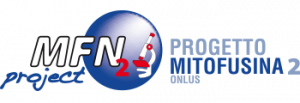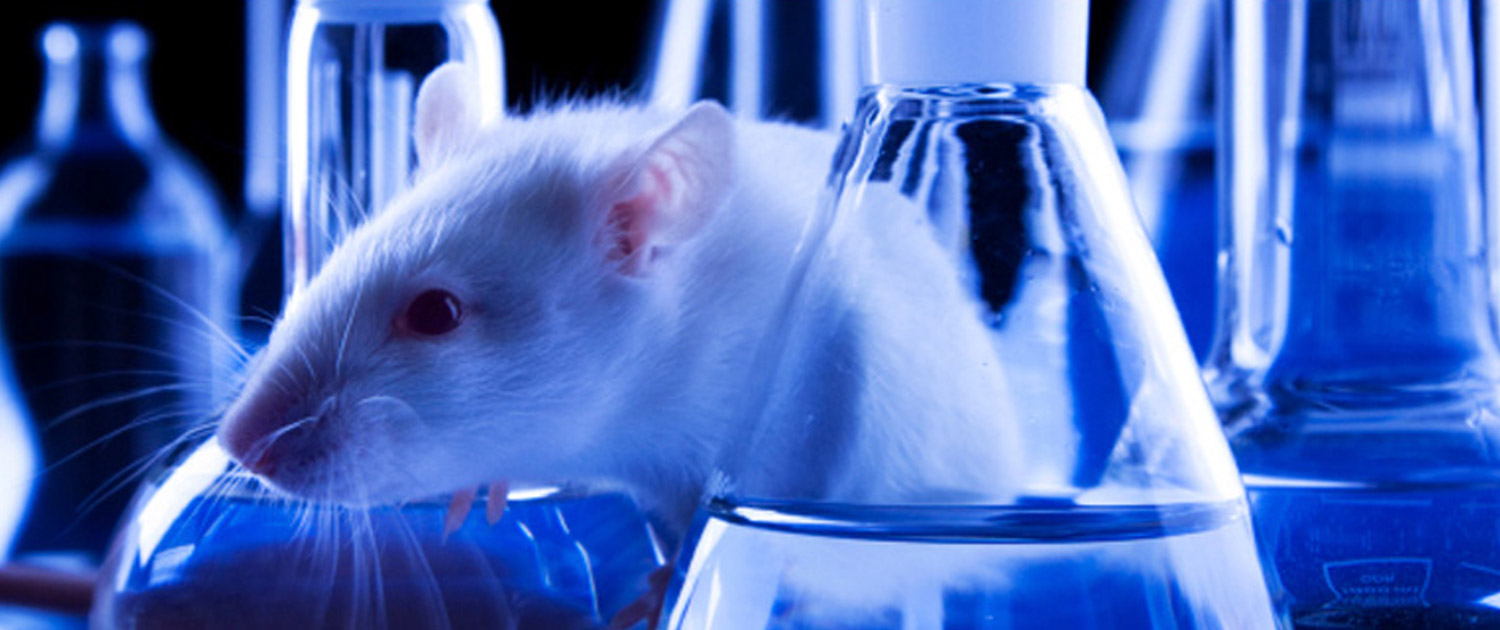TRANSGENIC MOUSE MODELS
A model organism is a species studied to understand particular biological phenomena, on the grounds of data obtained from the organism model will provide information on other organisms. It is possible because much of the biological characteristics, such as metabolic and developmental processes as well as genes that regulate them, are conserved during evolution.
The choice of model organism depends on the type of research being conducted. Molecular biology questions are studied more easily in unicellular organisms or viruses because of their ability to grow rapidly in large quantities, allowing to associate genetic and biochemical approaches. However, the study of other questions such as processes of human development or diseases requires certainly more complex organisms. In this regard, the murine model is most used, because of its high similarity with man.
Today the importance of model organism is surely enhanced by availability of molecular genetics tools which allow genetic manipulations. Mice genetically modified to express normally absent proteins, to overexpress wild-type proteins, to introduce genetic mutations linked to human disease or to silence normally expressed genes have yielded important transgenic mouse models for studying genetic silencing or mutation effects simultaneously in different cell types which could in principle be affected in a precise pathology.
To study Mitofusine 2 (MNF2) neuropathies such as Charcot-Marie-Tooth disease type 2A (CMT2A), it is useful to generation of transgenic mouse models characterized by the expression of the MNF2 gene encoding human wild-type protein or protein characterized by mutations associated with these pathologies. It could help not only to understand the mechanisms by which these mutations cause neurodegeneration, but also to identify innovative therapeutic targets.
In this section we will summarize the features of principal MFN2 transgenic mice, whose data are reported in the literature:
- MitoCharc0
- MitoCharc1
- MFN2-T105M
- Conditional Mfn2 loxP knockout
- Thy1.2 MFN2-R94Q
Mouse model: MitoCharc0
Transgene: Transgene was designed with human MFN2 gene driven by neuron specific enolase.
Development: Transgene was microinjected into the male pronucleus of B6D2F1 mouse fertilized oocytes. Injected embryos were implanted into psuedo-pregnant females.
Symptoms: MitoCharc0 did not display clinical symptoms reminiscent of CMT2A.
References: Cartoni R, Arnaud E, Médard JJ, Poirot O, Courvoisier DS, Chrast R, Martinou JC. Expression of mitofusin 2(R94Q) in a transgenic mouse leads to Charcot-Marie-Tooth neuropathy type 2A. Brain. 2010 May;133(Pt 5):1460-9. PubMed PMID: 20418531.
Mouse model: MitoCharc 1
Transgene: MFN2-R94Q transgene was designed with mutant human MFN2 gene (single amino acid substitution of arginine to glutamine at codon 94; R94Q) driven by neuron specific enolase.
Development: Transgene was microinjected into the male pronucleus of B6D2F1 mouse fertilized oocytes. Injected embryos were implanted into psuedo-pregnant females.
Symptoms: MitoCharc1 mouse exhibited typical symptoms of CMT2A, including locomotor impairment, and a shift in the size of myelinated axons correlating with an increase in mitochondria in these axons at 5 months of age. Enzymatic measurements show a combined defect of mitochondrial complexes II and V (40 and 30% decrease, respectively).
References: Cartoni R, Arnaud E, Médard JJ, Poirot O, Courvoisier DS, Chrast R, Martinou JC. Expression of mitofusin 2 (R94Q) in a transgenic mouse leads to Charcot-Marie-Tooth neuropathy type 2A. Brain. 2010 May;133(Pt 5):1460-9. PubMed PMID: 20418531.
Guillet V, Gueguen N, Cartoni R, Chevrollier A, Desquiret V, Angebault C, Amati-Bonneau P, Procaccio V, Bonneau D, Martinou JC, Reynier P. Bioenergetic defect associated with mKATP channel opening in a mouse model carrying a mitofusin 2 mutation. FASEB J. 2011 May;25(5):1618-27. doi: 10.1096/fj.10-173609.
http://www.ncbi.nlm.nih.gov/pubmed?term=20418531
http://www.ncbi.nlm.nih.gov/pubmed/21285398
Mouse model: MFN2-T105M
Transgene: MFN2-T105M was designed with mutant human MFN2 gene (single amino acid substitution of threonine to methionine at codon 105; T105M) driven by motor-neuron-specific HB9 promoter
Development: Transgene was microinjected into the male pronucleus of mouse fertilized oocytes Injected embryos were implanted into psuedo-pregnant females.
Symptoms: MFN2-T105M mouse showed key clinical signs of CMT2A disease in a dosage-dependent manner. They had a severe gait defect due to an inability to dorsi-flex the hindpaws. This distal muscle weakness was associated with reduced numbers of motor axons in the motor roots and of the anterior calf muscles. Many motor neurons showed improper mitochondrial distribution. These symptoms were evident from first days of life.
References: Detmer SA, Vande Velde C, Cleveland DW, Chan DC. Hindlimb gait defects due to motor axon loss and reduced distal muscles in a transgenic mouse model of Charcot-Marie-Tooth type 2A. Hum Mol Genet. 2008 Feb 1;17(3):367-75. Epub 2007 Oct 24. PubMed PMID: 17959936.
Mouse model: conditional Mfn2 loxP knockout
Transgene: Transgene was characterized by two loxP recombination sites flanking 6 exon MNF2 gene, encoding the canonical G-1 GTPase motif MNF-2 protein.
Development: To generate the Mfn loxP mouse, ES clones carrying targeted loxP sites were injected into C57BL/6 blastocysts. Resulting mice were maintained as homozygous stocks. Mfn loxP mice were crossed with Wnt1-Cre or En1-Cre transgenic mice to obtain Mfn loxP conditional mice, characterized by MNF2 Knockout neuronal tissue where Cre recombinase was expressed.
Symptoms: Mouse showed cerebellar development beginning embryonically and going on postnatally during the first three weeks. At P7 the areas of MNF2 null cerebella have been decreased. Cerebellum deformity was consistent with the movement defect and motor coordination abnormality. Purkinje Cells were characterized by ultrastructural defects and degenerate. It was observed Fusion-Deficient Mitochondria associated with lacking mitochondrial DNA (mtDNA) Nucleoids.
References: Chen H, McCaffery JM, Chan DC. Mitochondrial fusion protects against neurodegeneration in the cerebellum. Cell. 2007 Aug 10;130(3):548-62. PubMed PMID: 17693261
Mouse model: Thy1.2 MFN2-R94Q
Transgene: MFN2-R94Q transgene was designed with human MFN2 gene (single amino acid substitution of arginine to glutamine at codon 94; R94Q) by the neuron-specific Thy1.2 promoter.
Development: MFN2-R94Q transgene was integrated into the Y chromosome and its expression is driven by the murine promoter of the 1 theta antigen (Thy1.2). The construct was then microinjected into fertilized C57BL / 6J oocytes and MFN2-R94Q mice were reared and maintained on a C57BL/ 6J genetic background.
Symptoms: The MFN2-R94Q transgenic mouse showed the clinical features of the disease already from the first months of life with an average survival of around 5 months. Affected animals showed a reduction in weight growth associated with motor difficulties. MFN2-R94Q mice also exhibited inflammation in the lumbar region of the spinal cord.
References: Zhou Y, Carmona S, Muhammad AKMG, Bell S, Landeros J, Vazquez M, Ho R, Franco A, Lu B, Dorn GW 2nd, Wang S, Lutz CM, Baloh RH. Il ripristino dell’equilibrio della mitofusina previene la degenerazione assonale in un modello Charcot-Marie-Tooth tipo 2A. J Clin Invest. 2019 Mar 18;129(4):1756-1771. doi: 10.1172/JCI124194. Erratum in: J Clin Invest. 2021 Jan 19;131(2): PMID: 30882371; PMCID: PMC6436852.


